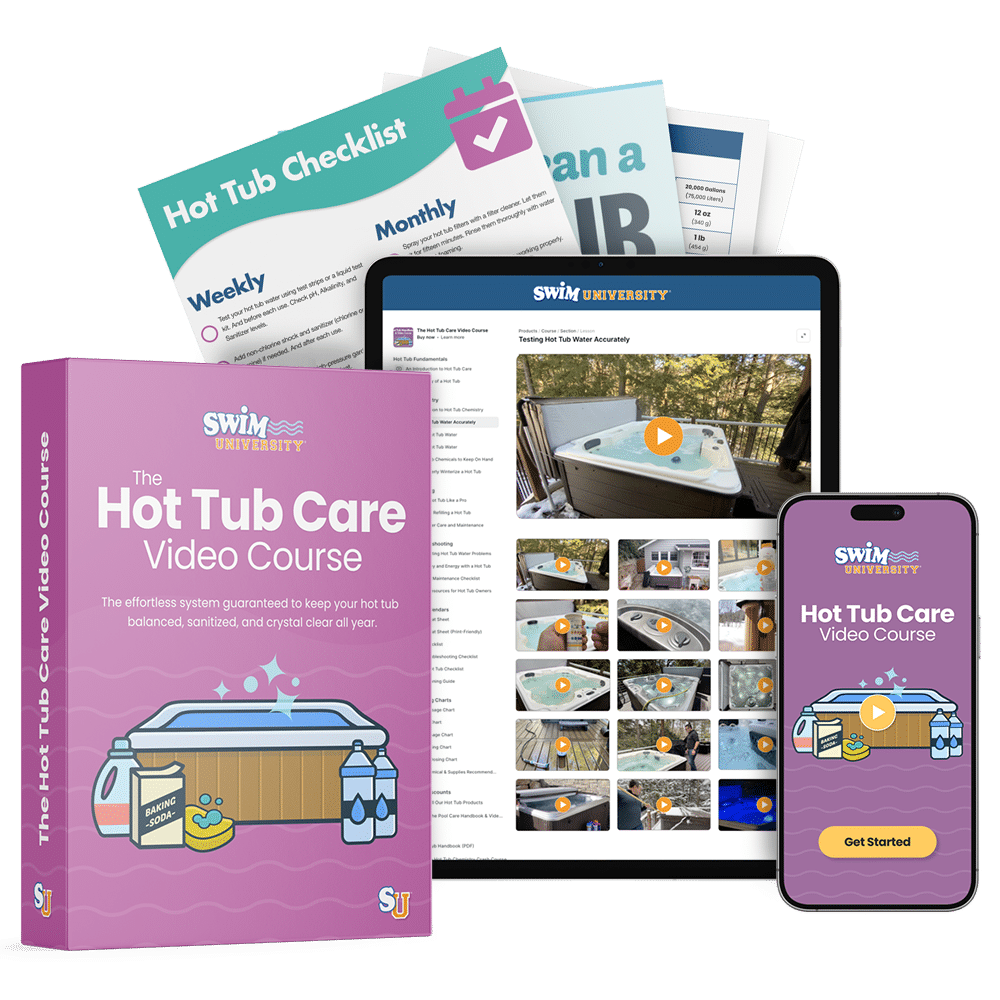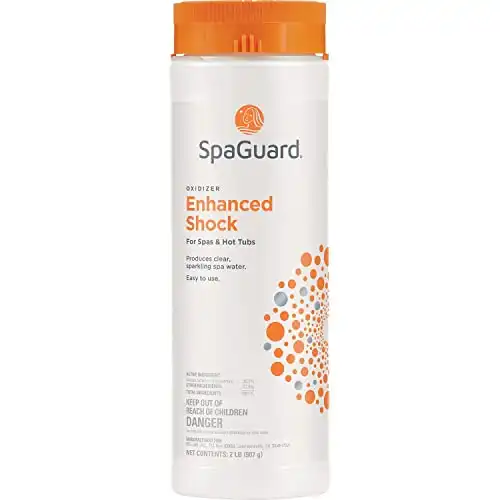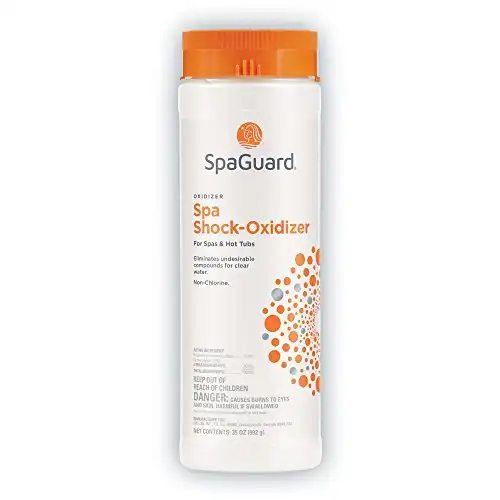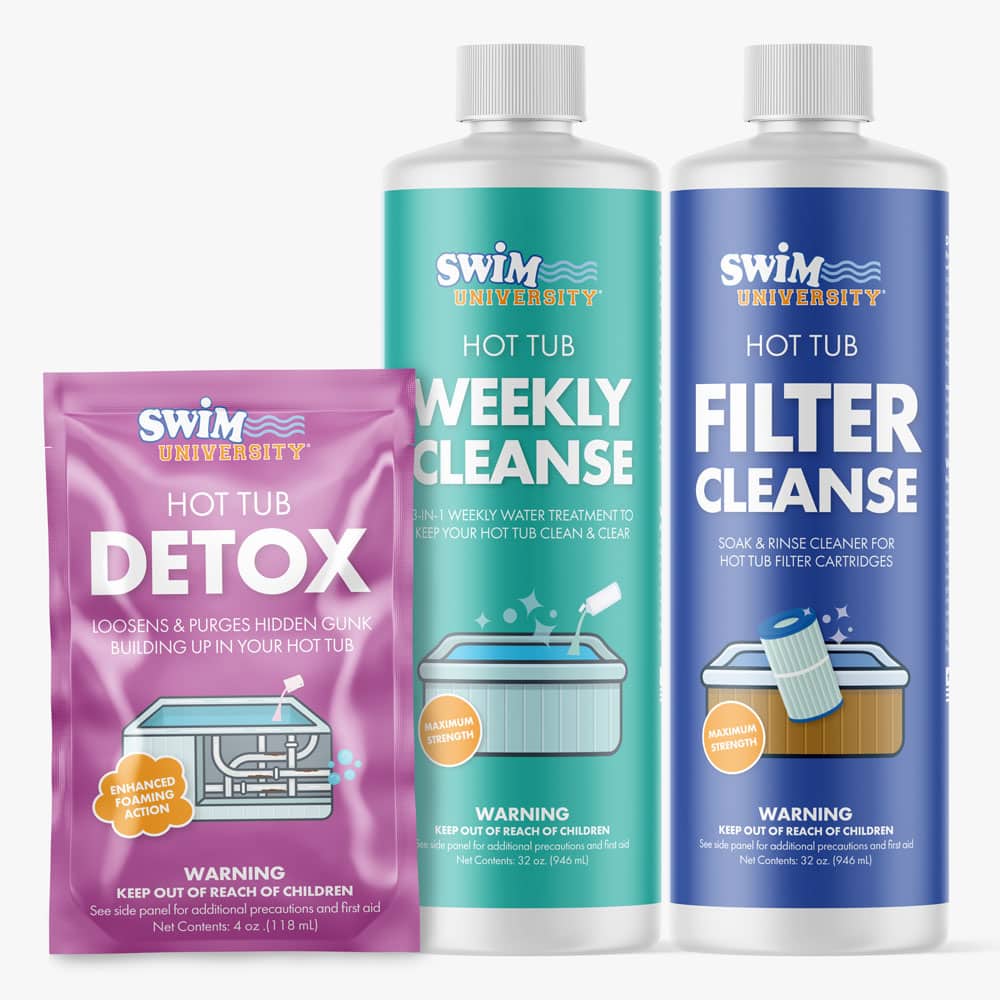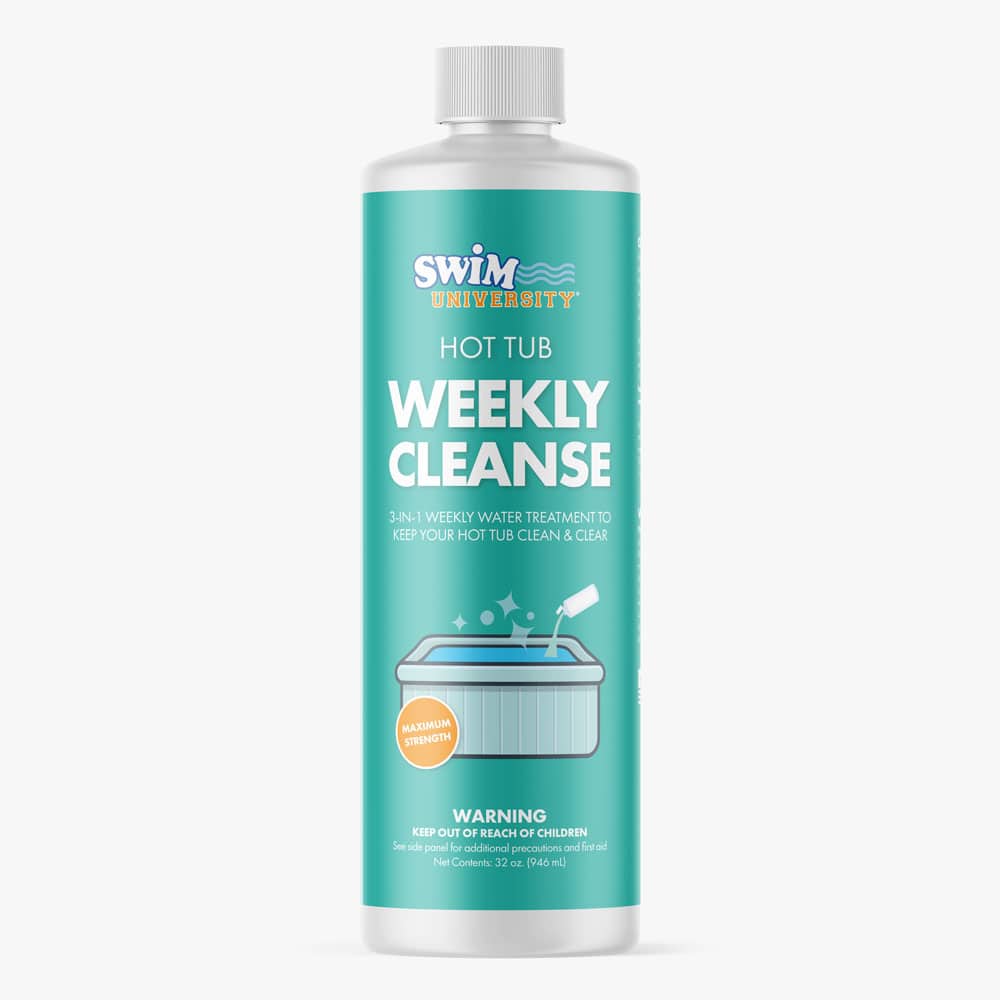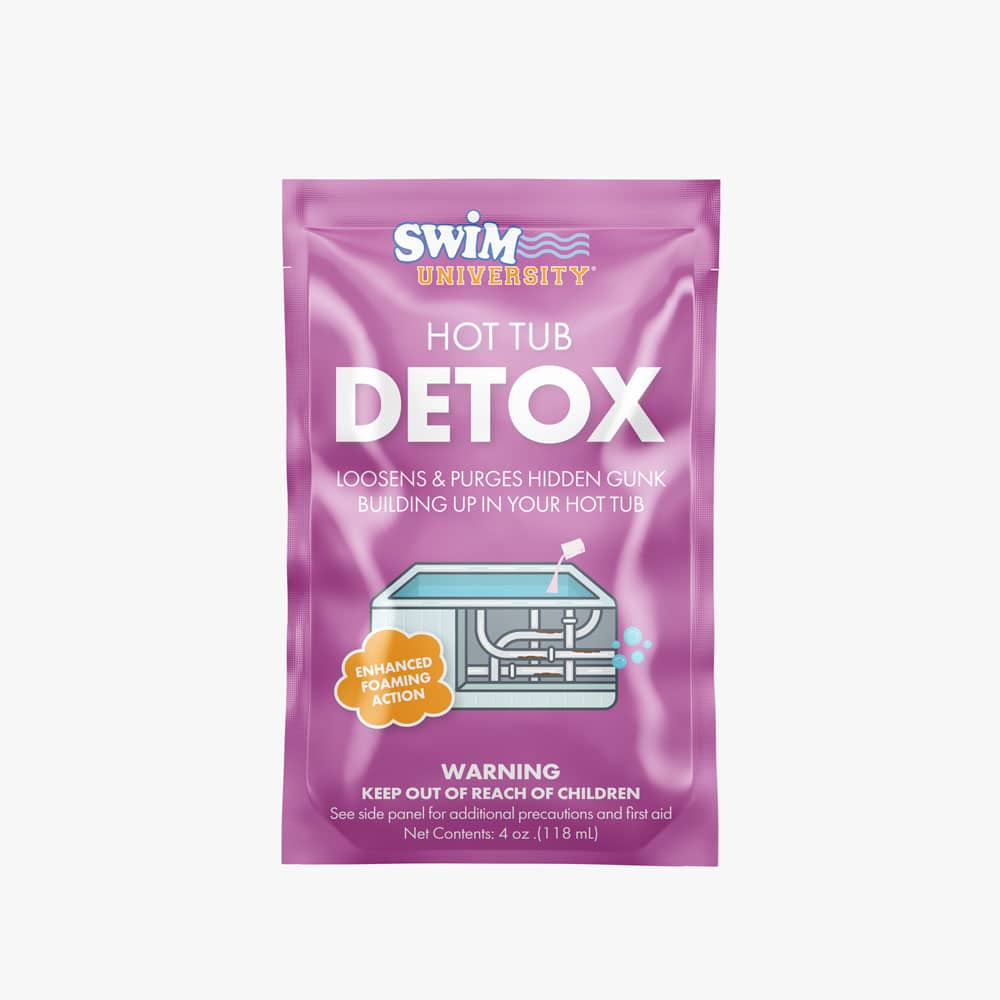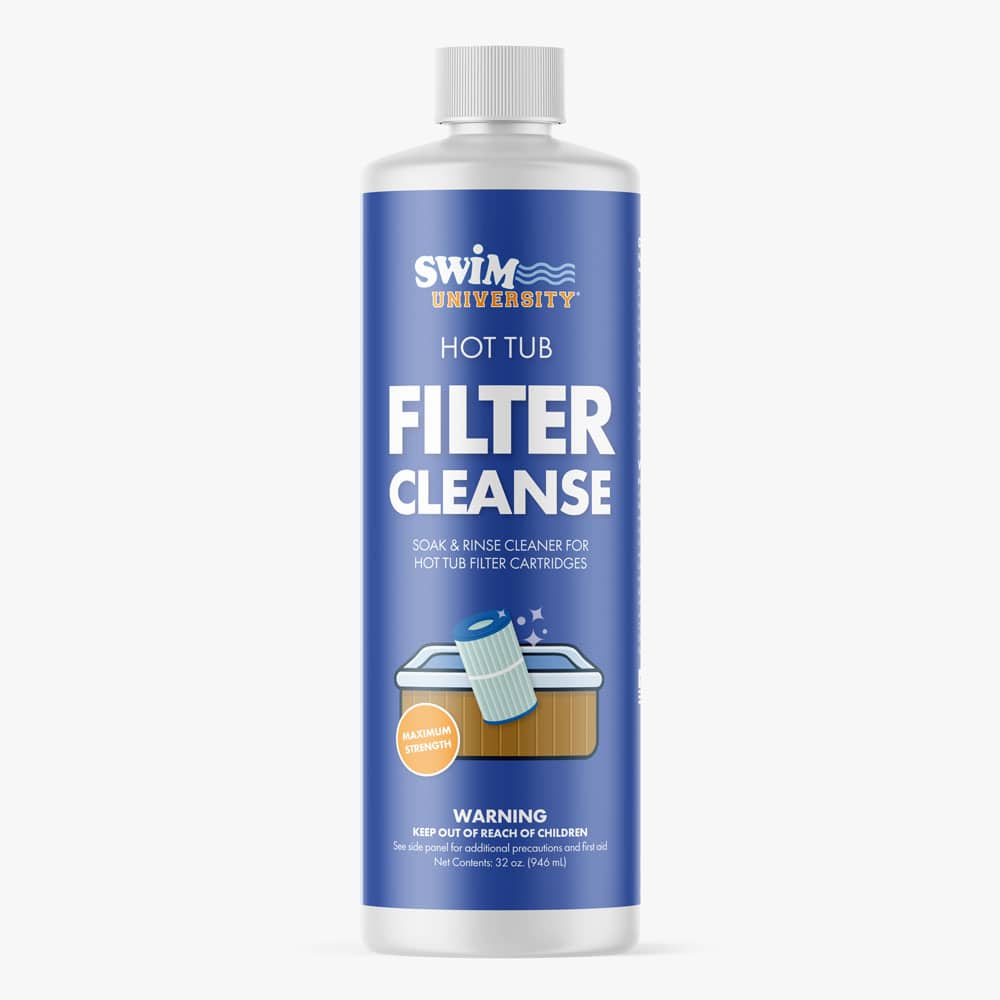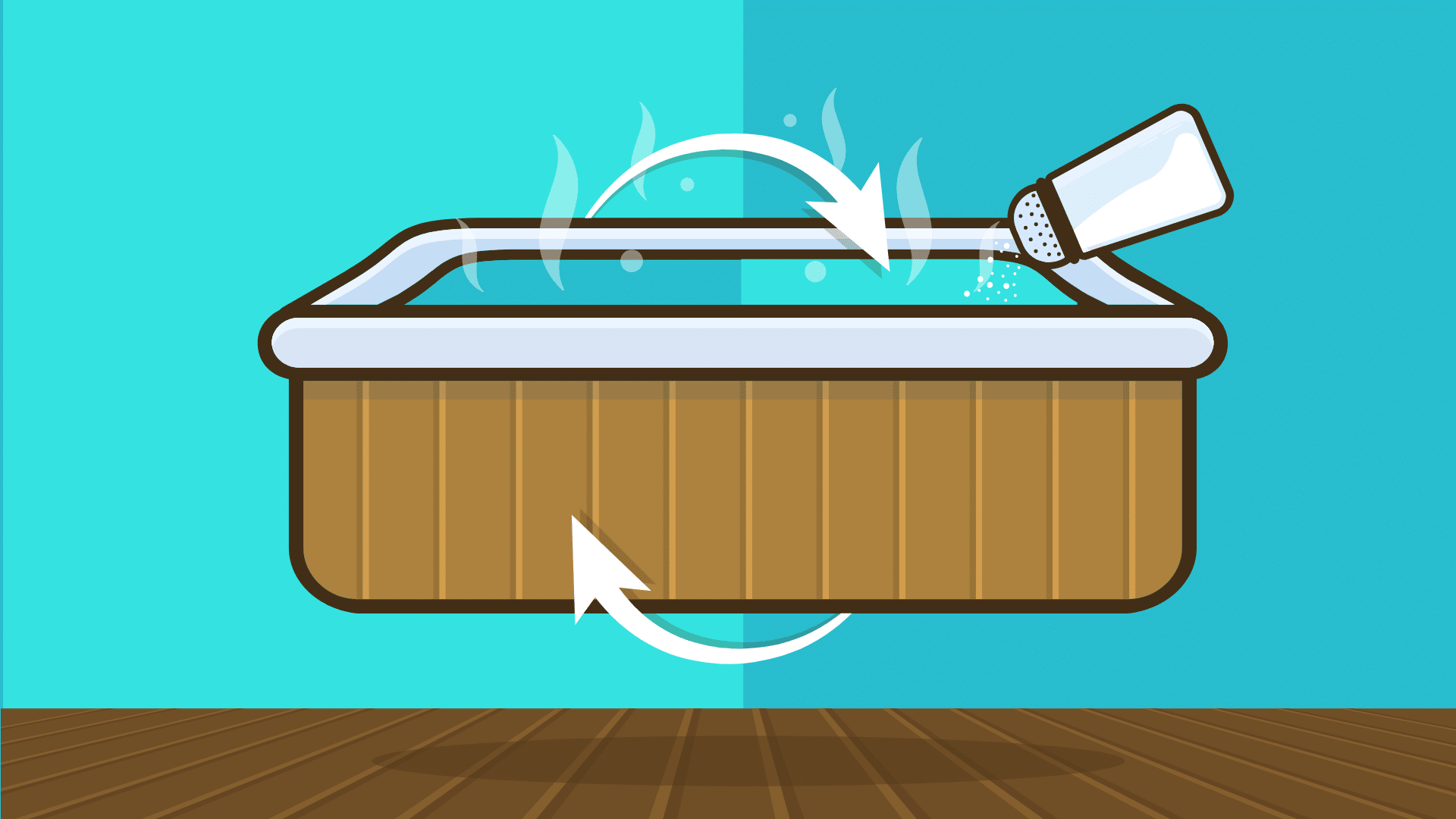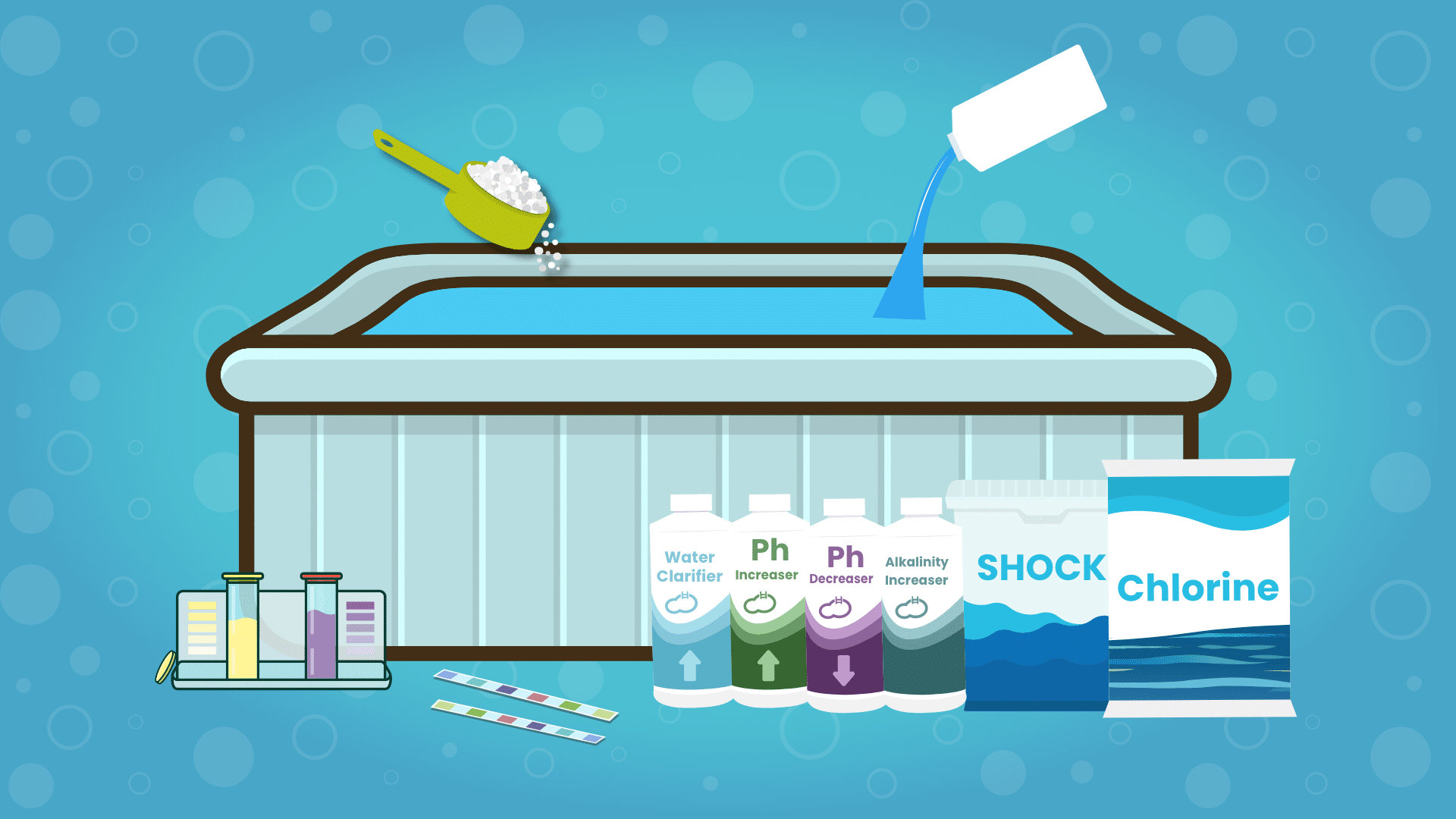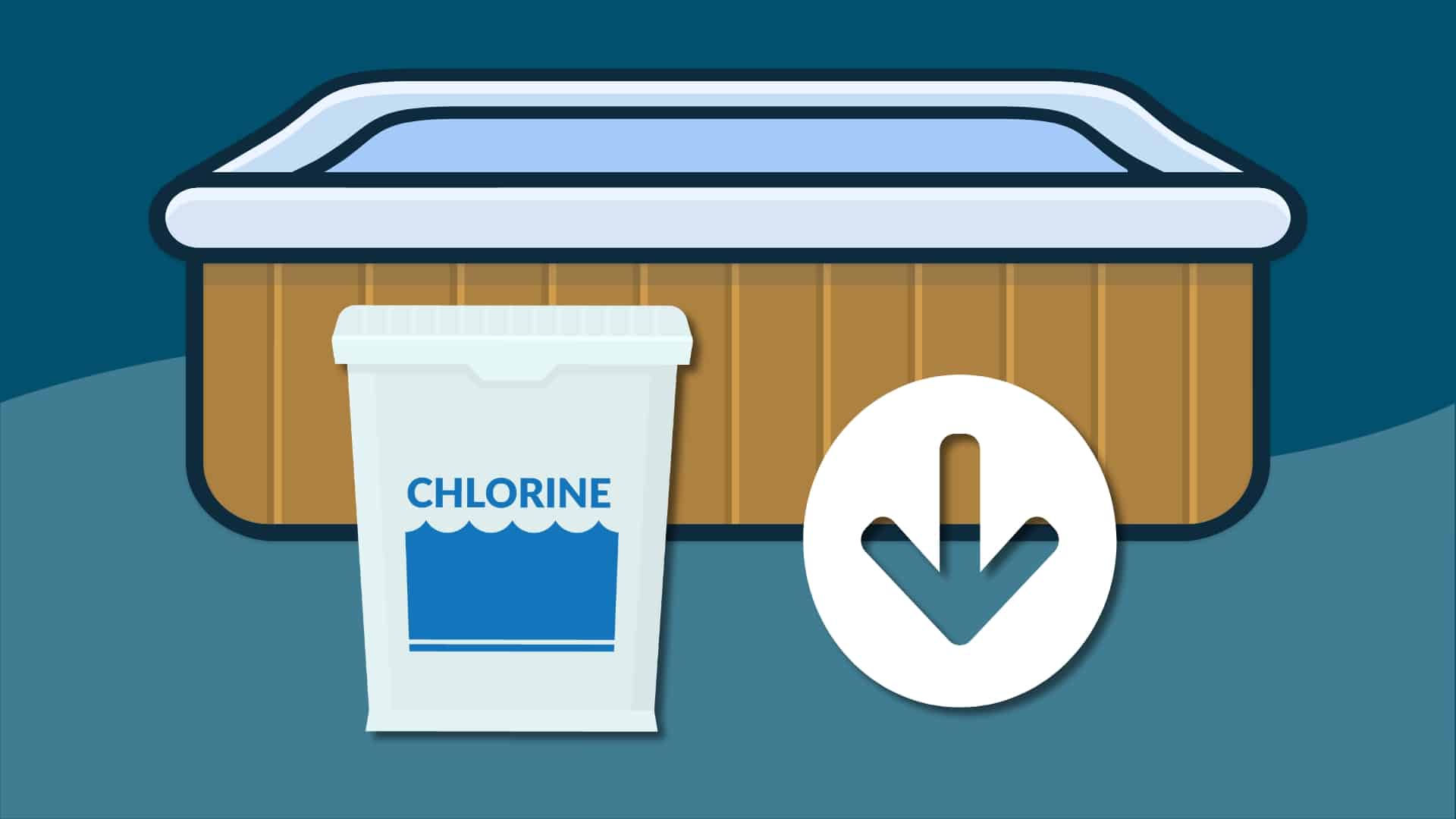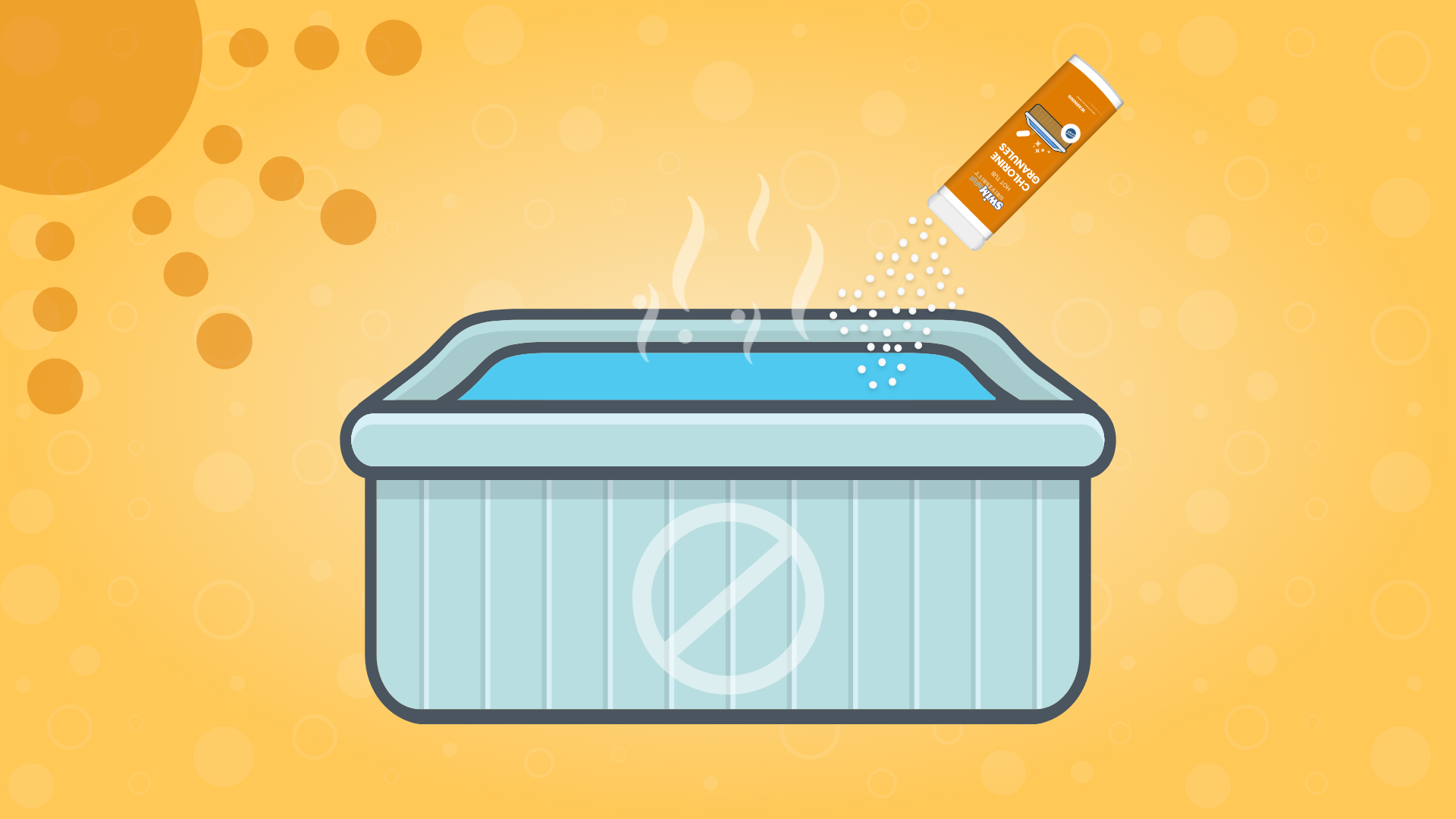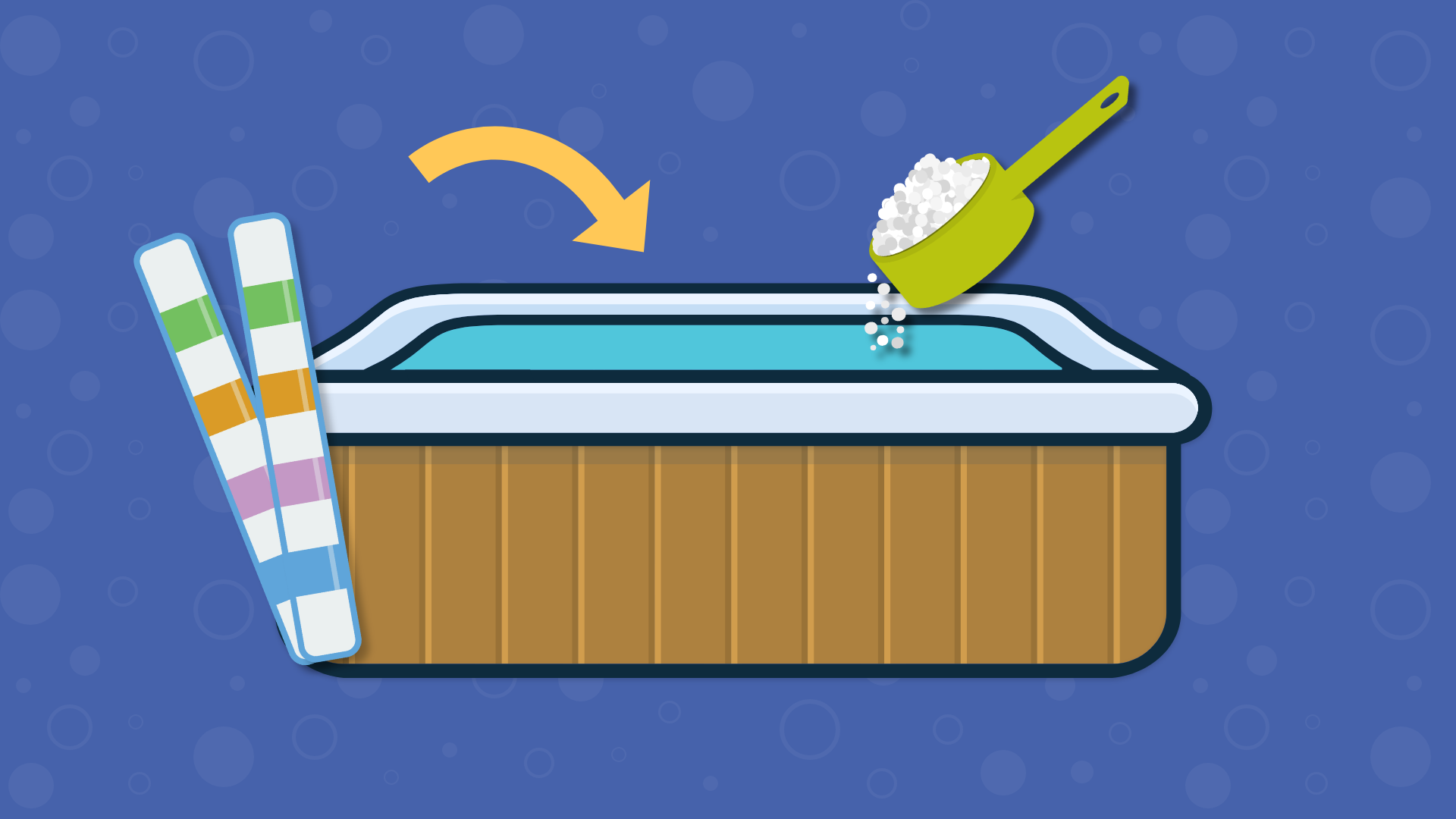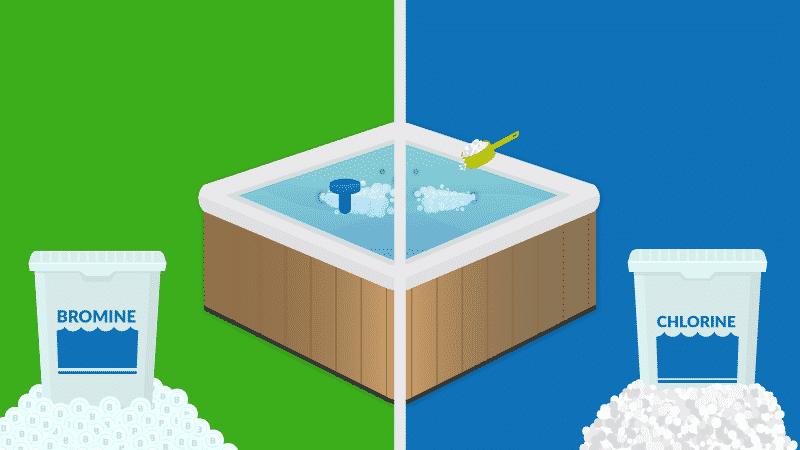The best way to make sure your hot tub water is sanitized is to add shock to your hot tub at least once a week. But depending on how often you use your hot tub or how many people use it (bather load), you might need to add it more often. And whether you use chlorine shock or non-chlorine shock depends on the condition of your water.
Knowing which type of shock to use and how often to add it is the key to keeping your water clean and clear. So here’s a simple step-by-step guide on how to add shock to your hot tub on a regular basis. Check out the video below, or keep reading for the complete tutorial. 👇
Cut the confusion with our easy-to-use video course. Save $1,000's on hot tub care and keep your water clean and clear for good!
Learn MoreWhat Does Hot Tub Shock Do?
Shocking your spa water is the process of adding a concentrated dose of free chlorine (chlorine shock) or oxidizer (non-chlorine shock) to your water. Using shock has a few benefits:
1. Reactivate Your Sanitizer
As you use your hot tub, the sanitizer in your water (chlorine or bromine) starts to combine with contaminants. Adding a shock treatment will help break up that combined chlorine or bromine. That means there’s more free and available chlorine or bromine to actively sanitize your water.
2. Breaks Down Contaminants and Clears Cloudy Water
Shocking your hot tub helps remove body oil, dead skin cells, sweat, organic waste, and cosmetics water. And as the shock frees up your sanitizer to kill contaminants, it helps clear up cloudiness resulting in clear water. If you’re dealing with a cloudy hot tub right now, we have a complete guide on How to Clear Up Cloudy Hot Tub Water.
3. Removes Chloramines and Chlorine Smell
As chlorine combines with contaminants and gets used up, it creates combined chlorine. These are also known as chloramines, and they’re what cause that chlorine-like smell in your hot tub. Shock will break up that used-up chlorine and remove that chlorine smell.
4. Regenerates Bromine
If you use bromine in your hot tub, it will start to combine with contaminants over time (and creates bromamines). But adding shock will regenerate used-up bromine. By oxidizing combined bromine, new bromine forms, and your bromine levels will rise.
What Type of Hot Tub Shock to Use
There are two common types of hot tub shock: chlorine shock and non-chlorine shock (oxidizer). Non-chlorine shock is best for regular maintenance, whereas chlorine shock works well when you need to kill contaminants or clear up cloudy water.
A chlorine-based hot tub shock helps treat cloudy water, kill bacteria and algae, and remove contaminants after heavy hot tub usage. This formula also contains an oxidizer, which will help break apart any combined chlorine or bromine that's been used up in the water.
Also known as oxidizer, non-chlorine hot tub shock helps revitalize your chlorine or bromine so it can actively sanitize your water. Use an oxidizer at least once a week but ideally after each hot tub soak to keep your water sanitized.
1. Chlorine Shock
Chlorine shock kills contaminants like bacteria and algae and breaks down organic matter. It’s powerful enough to help treat issues like cloudy water or remove contaminants after high hot tub usage. But because it’s so powerful and concentrated, you’ll have to wait to use your hot tub after adding chlorine shock. The active ingredient is usually the same as regular hot tub sanitizer (sodium dichlor), but the formula may also contain an oxidizer.
Watch Your CYA Levels!
Dichlor-based chlorine, like most hot tub shock, contains cyanuric acid (a.k.a. CYA or stabilizer). This helps prevent chlorine from breaking down in the sun. But since most hot tubs are covered when not in use, that CYA can easily build up over time and reduce chlorine effectiveness. Your CYA levels should be between 30 and 50 PPM. If your CYA gets too high, you’ll need to drain and refill your hot tub partially.
2. Non-Chlorine Shock (Oxidizer)
Commonly referred to as oxidizer, non-chlorine shock helps reactivate the chlorine or bromine that’s already in your water. It does this by breaking up the combined chlorine or bromine that’s already been used to fight contaminants. Even though non-chlorine shock won’t directly kill contaminants, it will help revitalize your existing sanitizer (which does kill contaminants). And it can help get rid of organic contaminants lingering after you use your spa (skin cells, lotions, etc.). You can also use your hot tub shortly after adding oxidizer to the water, making it a great treatment to add once a week or after each hot tub soak.
When to Shock a Hot Tub
Shock your hot tub with non-chlorine shock at least once a week, but more often if you use your hot tub regularly. For example, if you use your hot tub 3-4 times a week, consider adding a non-chlorine shock after each use to keep your sanitizer active in the water. However, if you use your hot tub less often (or not at all) during the week, add non-chlorine shock once a week.
Be sure to test and balance your pH and alkalinity once a week as well. These levels can impact how well your shock and sanitizer (like chlorine or bromine) works in the water.
Can I Use Chlorine Shock in My Non-Chlorine Hot Tub?
Non-chlorine shock (oxidizer) can be used in any hot tub. On the other hand, while chlorine shock is great for troubleshooting water issues, it may not be appropriate for every hot tub or water situation.
Bromine Hot Tub
Chlorine shock is okay in a bromine hot tub. If you have high hot tub usage, cloudy water, or algae, it’s okay to shock with chlorine. Just be sure your chlorine shock also includes an oxidizer, which will help break up combined bromine in the water. And don’t mix chlorine and bromine chemicals outside of your hot tub water. Finally, test and balance your bromine levels regularly. You can also use non-chlorine shock for regular maintenance or if you use your hot tub less frequently.
Mineral Hot Tub
Non-chlorine shock is preferred with a mineral system. If you’re using a mineral sanitizer, you already know you have to supplement your water with a little chlorine (0.5 PPM) or bromine (1.0 PPM). But because of these low levels, it’s easy to end up with too much chlorine in the water if you use chlorine shock.
If you’re having a problem with algae or bacteria, or your chlorine level is at zero, it’s okay to add chlorine shock. However, consider using non-chlorine shock more regularly so the chlorine doesn’t jump up too high.
Salt Water Hot Tub
Chlorine shock is okay in a salt water hot tub. The salt chlorine generator in your hot tub turns salt into chlorine. That means it’s okay to add more chlorine to the water. You can also use non-chlorine shock if you’re concerned about the chlorine level being too high.
Ultraviolet, Ionizer, or Ozonator Hot Tub
Chlorine shock is okay with ozonators. Dichlor chlorine, which is the active ingredient in most hot tub shock, is compatible with these systems. But always follow the manufacturer’s instructions and read any warranty information before using a new chemical.
How to Shock Your Hot Tub
Adding shock to a hot tub is a pretty straightforward process. But you do need to take a few precautions and follow the steps in the right order to get the most benefit. For supplies, you’ll need:
- Chlorine or non-chlorine shock
- Test strips
- Measuring cup or tablespoon
- Safety gear, like goggles and chemical-resistant gloves
Step 1. Uncover Your Hot Tub
You’ll want to leave your hot tub uncovered throughout this process. Once you add the shock, the chemical will need to off-gas from the water. Remove any dispensers, thermal blankets, or other accessories that may be floating in the water.
Step 2. Test the Water
Before adding shock to your hot tub, test and balance your alkalinity and pH. When these levels are in range, it helps your shock work more effectively. Your pH should be between 7.4 and 7.6, and your alkalinity should be between 100 and 150 PPM (80 PPM is usually okay). If you need more help adjusting your pH, check out our guide on How to Lower pH in a Hot Tub.
Step 3. Turn Off the Air Valves
Turn off the air valves so the water is not too agitated. This will prevent the shock from off-gassing too quickly. The circulation pump needs to remain on to distribute the shock evenly through the hot tub. But keep the jets on low and the air valves off.
Step 4. Put On Your Safety Gear
Shock (and every other chemical you put in your hot tub) should be handled with caution. In addition to wearing gloves and safety goggles, consider wearing long pants, a long-sleeved shirt, and closed-toe shoes. And be careful adding chemicals when it’s windy since powder can blow back.
Step 5. Measure and Add Shock
It’s very common to overdose your hot tub. Using a measuring cup or tablespoon, measure out the proper amount of shock according to the manufacturer’s instructions. Typically, a 300-gallon hot tub will only need 1 to 2 ounces (2 to 4 tablespoons) of shock. That’s why it’s so important to accurately measure your shock before adding it (don’t just eyeball it). Then, add the shock to your water.
Step 6. Circulate Shock with the Cover Off
Leave the hot tub uncovered for at least 20 minutes to allow the shock to disperse and dissipate. Be sure the water is circulating with the air valves off and the jets on low. If you use non-chlorine shock, you can use the hot tub afterward. But if you use chlorine shock, you’ll need to retest your water and wait for your chlorine levels to drop back down within range (1 to 3 PPM). Regardless of what shock you use, place the cover on after 20 minutes to prevent evaporation if you won’t be using it.
Frequently Asked Questions about How to Shock a Hot Tub
Need more help with shocking your hot tub? Here are a few commonly asked questions and answers.
Is Hot Tub Shock the Same as Chlorine?
Hot tub shock is different than regular hot tub chlorine. Non-chlorine shock, as the name implies, contains no chlorine. It’s an oxidizer, which helps break up any used-up chlorine that’s in the water. Chlorine shock, on the other hand, usually contains the same active ingredient that’s in regular hot tub chlorine: sodium dichlor chlorine. But chlorine shock usually has other important ingredients, like oxidizers, that make it a more comprehensive treatment compared to regular chlorine.
How Long Before I Can Use the Hot Tub After Shocking?
If you use non-chlorine shock (oxidizer), you can use the hot tub after 20 minutes. Just make sure the hot tub water is circulating when you add the chemical. But if you use chlorine shock, you’ll need to wait until your chlorine levels drop back within range (1 to 3 PPM). Retest your water after 20 minutes, and be sure to leave the cover off as the chemical circulates.
When Should I Shock my Hot Tub?
Shock your hot tub at least once a week. If your hot tub gets a lot of use, or you’re having issues like cloudy water, add shock more frequently. A non-chlorine shock is useful for weekly maintenance or after each soak. And a chlorine-based shock is helpful if there are lots of bathers or contaminants in the water. Just remember to test and balance your pH and alkalinity once a week since that helps your shock and sanitizer work more effectively.
How Long Does Shock Last in a Hot Tub?
Hot tub shock is not meant to linger in the water. As the name implies, hot tub shock is meant to “shock” your water, revitalize your sanitizer levels, and remove contaminants. That’s why you’ll need to add shock at least once a week. If you’ve added non-chlorine shock, you can use your hot tub after 20 minutes. On the other hand, if you’ve added chlorine shock to your water, it’ll take longer to disperse. Test your water after several hours. You’ll be able to use your hot tub water once the chlorine levels have dropped back within the normal range (1 to 3 PPM).
Need More Hot Tub Maintenance Help?
- Download our free Hot Tub Cheat Sheet. It’s a free, easy-to-use guide to help you keep your hot tub water balanced and sanitized.
- Subscribe to our Swim University YouTube Channel. We publish free video tutorials throughout the year.
- Check out our Hot Tub Care Course. You’ll get step-by-step videos and a step-by-step downloadable guide with everything you need to know about hot tub maintenance.

